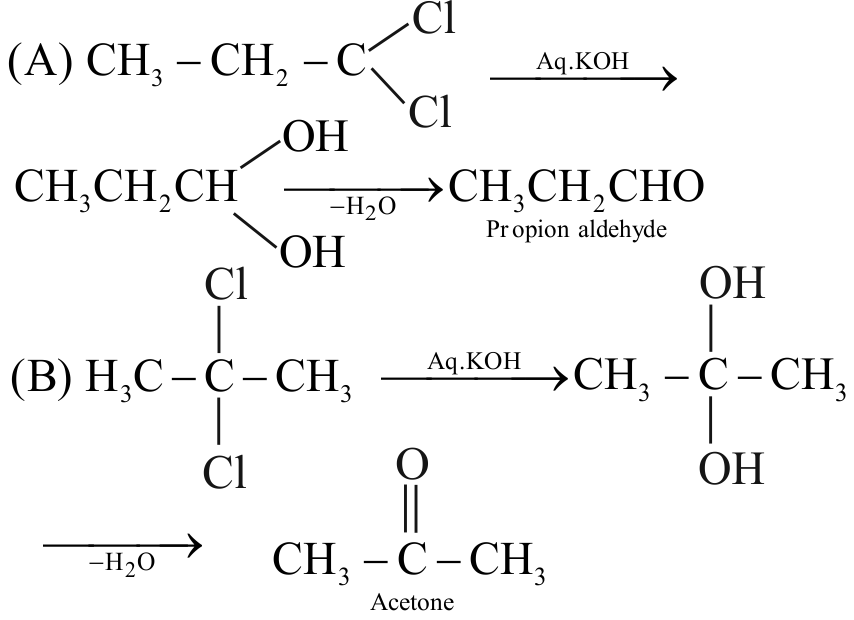323811 Two isomeric compounds ' \(\mathrm{A}\) ' and ' \(\mathrm{B}\) ' have the formula \(\mathrm{C}_{3} \mathrm{H}_{6} \mathrm{Cl}_{2}\), with aq \(\mathrm{KOH}\) solution ' \(\mathrm{A}\) ' give propionaldehyde and ' \(\mathrm{B}\) ' gives acetone. Then ' \(\mathrm{A}\) ' and ' \(\mathrm{B}\) ' are:
323811 Two isomeric compounds ' \(\mathrm{A}\) ' and ' \(\mathrm{B}\) ' have the formula \(\mathrm{C}_{3} \mathrm{H}_{6} \mathrm{Cl}_{2}\), with aq \(\mathrm{KOH}\) solution ' \(\mathrm{A}\) ' give propionaldehyde and ' \(\mathrm{B}\) ' gives acetone. Then ' \(\mathrm{A}\) ' and ' \(\mathrm{B}\) ' are:
323811 Two isomeric compounds ' \(\mathrm{A}\) ' and ' \(\mathrm{B}\) ' have the formula \(\mathrm{C}_{3} \mathrm{H}_{6} \mathrm{Cl}_{2}\), with aq \(\mathrm{KOH}\) solution ' \(\mathrm{A}\) ' give propionaldehyde and ' \(\mathrm{B}\) ' gives acetone. Then ' \(\mathrm{A}\) ' and ' \(\mathrm{B}\) ' are:
323811 Two isomeric compounds ' \(\mathrm{A}\) ' and ' \(\mathrm{B}\) ' have the formula \(\mathrm{C}_{3} \mathrm{H}_{6} \mathrm{Cl}_{2}\), with aq \(\mathrm{KOH}\) solution ' \(\mathrm{A}\) ' give propionaldehyde and ' \(\mathrm{B}\) ' gives acetone. Then ' \(\mathrm{A}\) ' and ' \(\mathrm{B}\) ' are:
323811 Two isomeric compounds ' \(\mathrm{A}\) ' and ' \(\mathrm{B}\) ' have the formula \(\mathrm{C}_{3} \mathrm{H}_{6} \mathrm{Cl}_{2}\), with aq \(\mathrm{KOH}\) solution ' \(\mathrm{A}\) ' give propionaldehyde and ' \(\mathrm{B}\) ' gives acetone. Then ' \(\mathrm{A}\) ' and ' \(\mathrm{B}\) ' are:



